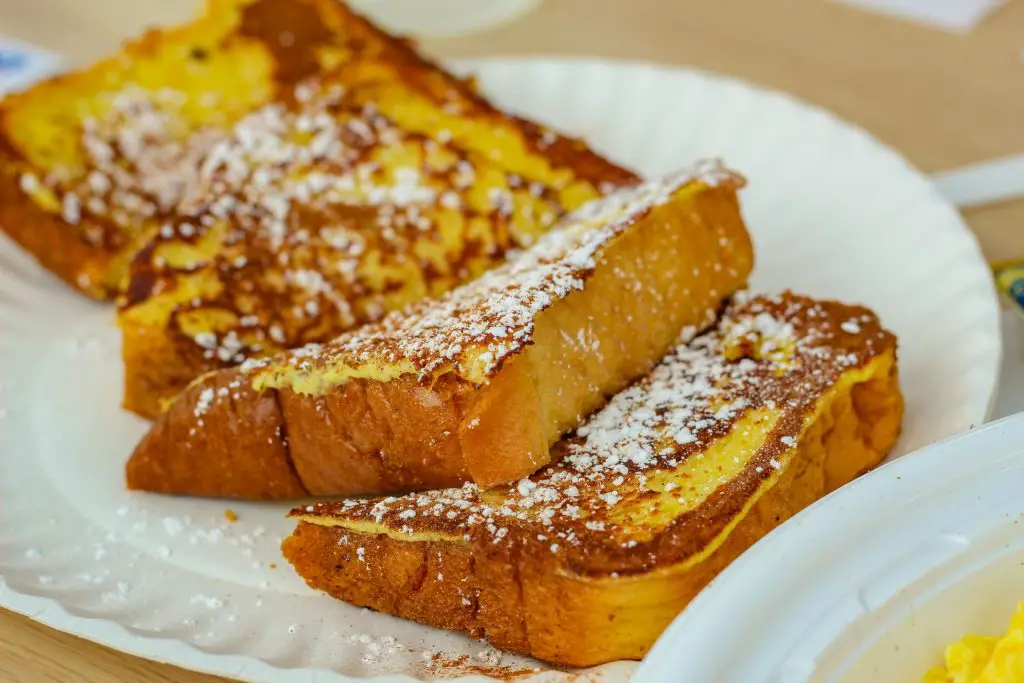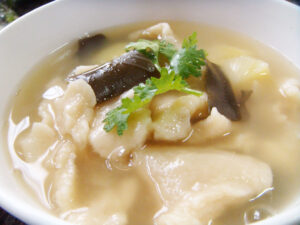French toast, known as “pain perdu” in French, which translates to “lost bread,” is a beloved breakfast classic that has been delighting palates for centuries. This dish, made from simple ingredients like bread, eggs, milk, and a touch of flavoring, has the power to transform stale bread into a mouthwatering breakfast treat. However, while French toast appears deceptively simple to prepare, achieving the perfect balance of flavors, textures, and appearance requires some skill and knowledge. In this article, we will delve into the secrets and tricks that elevate French toast from an ordinary breakfast to a culinary masterpiece.
Choosing the Right Bread
The foundation of any exceptional French toast is the bread itself. The choice of bread can significantly impact the final result. Ideally, you should use bread that is a day or two old, as slightly stale bread will absorb the egg mixture better without becoming too soggy. Popular choices for French toast include brioche, challah, baguette, and Texas toast. These breads have a dense and sturdy texture that holds up well when soaked in the egg mixture.
Preparing the Egg Mixture
The key to achieving a rich and flavorful French toast lies in the egg mixture. To make the perfect egg mixture, follow these steps:
Egg Ratio: For every 4 slices of bread, you will need 2 large eggs. This ratio ensures that your French toast is neither too eggy nor too dry.
Milk or Cream: Add 1/4 cup of milk or cream per 2 eggs. This helps create a creamy and custardy interior while keeping the exterior crispy.
Flavorings: Enhance the flavor of your French toast by adding a pinch of salt, a teaspoon of vanilla extract, and a dash of ground cinnamon or nutmeg. These additions will add depth and complexity to your dish.
Soaking the Bread
The key to achieving the perfect French toast texture is to allow the bread to absorb the egg mixture without becoming oversaturated. Here’s how to do it right:
Whisk Thoroughly: Ensure that the egg mixture is well combined. Whisking helps evenly distribute the eggs, milk, and flavorings.
Dip and Flip: Place each slice of bread into the egg mixture and allow it to soak for about 15-20 seconds on each side. The bread should be thoroughly coated but not saturated.
Shake Off Excess: Gently shake off any excess egg mixture to prevent your French toast from becoming overly soggy.
Cooking Techniques
The cooking technique you use can greatly impact the final texture of your French toast. Here are two popular methods:
Stovetop Pan-Frying: In a non-stick skillet or griddle, melt some butter over medium heat. Cook the soaked bread slices for 2-3 minutes per side until they are golden brown and crisp. This method gives you precise control over the cooking process.
Baking: Preheat your oven to 350°F (175°C). Place the soaked bread slices on a baking sheet and bake for 15-20 minutes, flipping halfway through. Baking is a convenient method when you need to prepare a large batch of French toast at once.
Achieving the Perfect Crispiness
To ensure your French toast has that delightful crisp exterior, consider these tips:
Use Butter: Instead of cooking oil, use butter for pan-frying. Butter adds a rich flavor and a golden brown crust to your French toast.
Moderate Heat: Maintain medium heat when cooking to prevent the exterior from burning before the interior is cooked through.
Preheat the Pan: Ensure that your skillet or griddle is hot before adding the soaked bread slices. This helps create a crisp exterior.
Toppings and Garnishes
The toppings and garnishes you choose can elevate your French toast from good to extraordinary. Here are some delicious options:
Maple Syrup: A drizzle of pure maple syrup is a classic choice that complements the sweetness of the French toast.
Fresh Fruits: Sliced strawberries, bananas, blueberries, or raspberries add a burst of freshness and color.
Whipped Cream: A dollop of freshly whipped cream adds a delightful creaminess.
Nuts: Chopped nuts, such as almonds, pecans, or walnuts, provide a satisfying crunch.
Powdered Sugar: A light dusting of powdered sugar adds a touch of sweetness and elegance.
Syrup Variations: Experiment with flavored syrups like cinnamon, vanilla, or fruit-infused syrups for unique flavor profiles.
Creative Variations
Once you’ve mastered the basic French toast, don’t be afraid to get creative. Here are some variations to try:
Stuffed French Toast: Create a sandwich by spreading cream cheese, Nutella, or fruit preserves between two slices of soaked bread before cooking.
Savory French Toast: Skip the sugar and add herbs, cheese, and savory toppings like bacon, ham, or sautéed mushrooms.
Overnight French Toast: Assemble your French toast the night before, refrigerate it, and bake it the next morning for a time-saving breakfast.
Cinnamon Roll French Toast: Mix brown sugar and cinnamon into the egg mixture for a delightful cinnamon roll flavor.
Vegan French Toast: Replace eggs with a mixture of mashed bananas, almond milk, and a pinch of nutritional yeast for a vegan-friendly option.
French toast is a timeless breakfast favorite that can be as simple or as indulgent as you desire. By paying attention to the choice of bread, mastering the egg mixture, employing the right cooking techniques, and experimenting with toppings and variations, you can unlock the secrets to making good French toast. Whether you prefer it classic or with a twist, the art and science of perfecting French toast are within your reach, allowing you to enjoy this breakfast bliss whenever you please. So, get ready to savor every bite of your homemade, golden-brown slices of French toast, and elevate your breakfast game to new heights.
Temperature Control
Another crucial aspect in achieving exceptional French toast is controlling the temperature throughout the cooking process. Maintaining the right temperature ensures that your toast cooks evenly and retains its desirable texture.
Consistent Heat: When cooking on the stovetop, ensure that the pan’s heat is consistent. If the heat is too high, your French toast may brown too quickly on the outside while remaining undercooked inside. Conversely, if the heat is too low, it may take too long to achieve the desired crispiness.
Oven Temperature: If you’re baking your French toast, make sure your oven is accurately preheated to the recommended temperature. Baking at the right temperature ensures even cooking.
Resting Time
After cooking, allow your French toast to rest for a minute or two on a wire rack. This brief resting period helps the custard inside set and ensures that the toast remains crispy on the outside while staying tender inside.
Presentation Matters
The visual appeal of your French toast can enhance your dining experience. Take a moment to consider the presentation:
Arrange with Care: Place your French toast slices on the plate neatly, slightly overlapping for an inviting presentation.
Garnish Thoughtfully: Add your chosen toppings and garnishes with care to create an aesthetically pleasing and appetizing plate.
Stack or Serve Flat: Depending on your preference, you can stack your French toast slices to create a towering delight or serve them flat with toppings spread evenly.
Perfecting the Syrup Drizzle
When drizzling syrup over your French toast, aim for even coverage without drowning the dish in sweetness. Here’s how to do it right:
Start in the Center: Begin by drizzling syrup in the center of your stack or plate to ensure that it distributes evenly.
Circular Motion: Move the syrup drizzle in a circular motion, gradually working your way outwards. This technique allows you to control the amount of syrup and avoid overwhelming the dish.
Storing and Reheating
In case you have leftover French toast or want to prepare it in advance, here are some tips for storing and reheating:
Refrigeration: If you have leftovers, store them in an airtight container in the refrigerator for up to 2-3 days.
Freezing: To store French toast for longer periods, consider freezing. Place individual slices on a baking sheet until frozen, then transfer them to a freezer bag. They can be stored for up to a month.
Reheating: To reheat, use the oven or toaster oven for the best results. This helps maintain the crispiness. Alternatively, you can use a microwave, but be cautious not to overheat, which can make the toast soggy.
Perfecting the art of making good French toast requires attention to detail, a bit of practice, and a dash of creativity. From selecting the right bread to mastering the egg mixture, controlling the cooking temperature, and enhancing the presentation, each step contributes to a memorable breakfast experience.
French toast is a versatile canvas that allows you to customize your breakfast to your taste preferences. Whether you prefer the classic simplicity of maple syrup and powdered sugar or enjoy experimenting with innovative toppings and fillings, French toast has something to offer everyone.
So, next time you prepare French toast, apply these tips and tricks to transform a basic breakfast into a culinary masterpiece. With the right techniques and a little bit of patience, you’ll be well on your way to creating the perfect French toast that will leave your taste buds singing and your breakfast table smiling. Enjoy your delicious breakfast journey!




